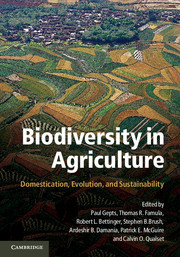Book contents
- Frontmatter
- Contents
- Tables
- Figures
- Foreword
- Contributors
- Acknowledgments
- Introduction: The Domestication of Plants and Animals: Ten Unanswered Questions
- 1 The Local Origins of Domestication
- Section I Early Steps in Agricultural Domestication
- 2 Evolution of Agroecosystems: Biodiversity, Origins, and Differential Development
- 3 From Foraging to Farming in Western and Eastern Asia
- 4 Pre-Domestic Cultivation during the Late Pleistocene and Early Holocene in the Northern Levant
- 5 New Archaeobotanical Information on Plant Domestication from Macro-Remains: Tracking the Evolution of Domestication Syndrome Traits
- 6 New Archaeobotanical Information on Early Cultivation and Plant Domestication Involving Microplant (Phytolith and Starch Grain) Remains
- 7 How and Why Did Agriculture Spread?
- 8 California Indian Proto-Agriculture: Its Characterization and Legacy
- Section II Domestication of Animals and Impacts on Humans
- Section III Issues in Plant Domestication
- Section IV Traditional Management of Biodiversity
- Section V Uses of Biodiversity and New and Future Domestications
- Index
- References
8 - California Indian Proto-Agriculture: Its Characterization and Legacy
Published online by Cambridge University Press: 05 June 2012
- Frontmatter
- Contents
- Tables
- Figures
- Foreword
- Contributors
- Acknowledgments
- Introduction: The Domestication of Plants and Animals: Ten Unanswered Questions
- 1 The Local Origins of Domestication
- Section I Early Steps in Agricultural Domestication
- 2 Evolution of Agroecosystems: Biodiversity, Origins, and Differential Development
- 3 From Foraging to Farming in Western and Eastern Asia
- 4 Pre-Domestic Cultivation during the Late Pleistocene and Early Holocene in the Northern Levant
- 5 New Archaeobotanical Information on Plant Domestication from Macro-Remains: Tracking the Evolution of Domestication Syndrome Traits
- 6 New Archaeobotanical Information on Early Cultivation and Plant Domestication Involving Microplant (Phytolith and Starch Grain) Remains
- 7 How and Why Did Agriculture Spread?
- 8 California Indian Proto-Agriculture: Its Characterization and Legacy
- Section II Domestication of Animals and Impacts on Humans
- Section III Issues in Plant Domestication
- Section IV Traditional Management of Biodiversity
- Section V Uses of Biodiversity and New and Future Domestications
- Index
- References
Summary
Despite the fact that California Indians lived, gathered, hunted, and managed lowland oak ecosystems for millennia, the land was productive enough in the 1860s to support a new and very intensive land use: modern agriculture. Drawing from an existing legacy of the Indian era – its fertile soils, biodiversity, conserved water, and abundant timber resources – modern agriculture flourished. This chapter characterizes the indigenous food cultivation and management systems that were in place in California's lowland oak ecosystems at European contact.
Harlan (1992:242) reminds us that to develop a sustainable agriculture, “We need to approach the daunting tasks ahead with more humility and take a broader view of the ecosystems we must manage”. Following Harlan, we suggest that indigenous manipulation of plants for food not be viewed in isolation, but rather in a broader context of prehistoric subsistence systems and how these systems fit within and impact dynamic and diverse ecosystems. For example, wildlands contain plant resources for fuel, weapons, clothing, basketry, cordage, tools, dyes, and medicines. Yet vegetation manipulation to augment wild plant populations for these needs is seldom considered in tandem with food getting. By focusing upon one cultural use category, we argue that the multi-dimensionality of human traditional ecological knowledge remains obscured. Native people are viewed as preoccupied with ???getting food???, rather than understanding the structure and function of ecosystems and how they can be modified to provide for all of their needs.
- Type
- Chapter
- Information
- Biodiversity in AgricultureDomestication, Evolution, and Sustainability, pp. 190 - 224Publisher: Cambridge University PressPrint publication year: 2012
References
- 7
- Cited by



